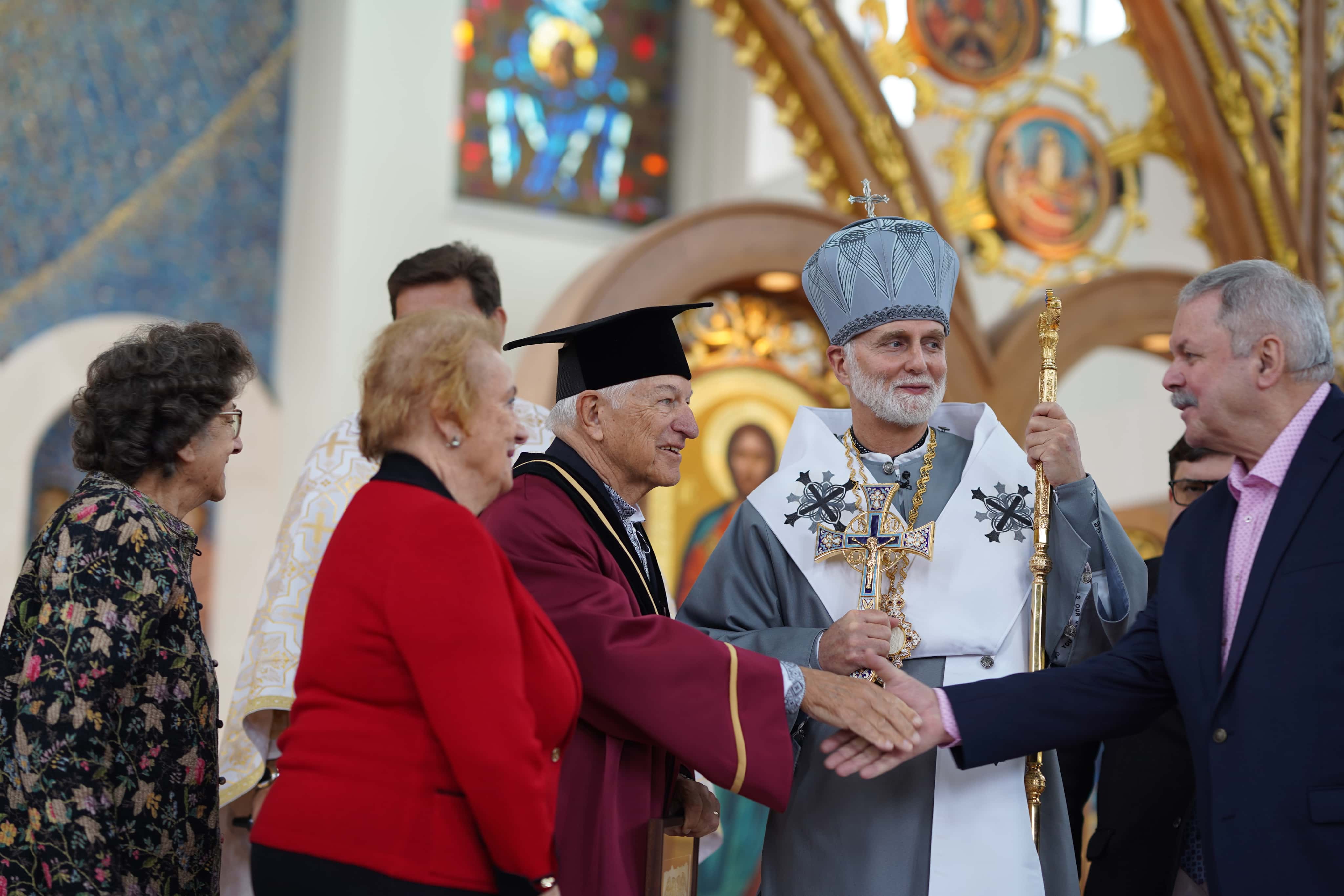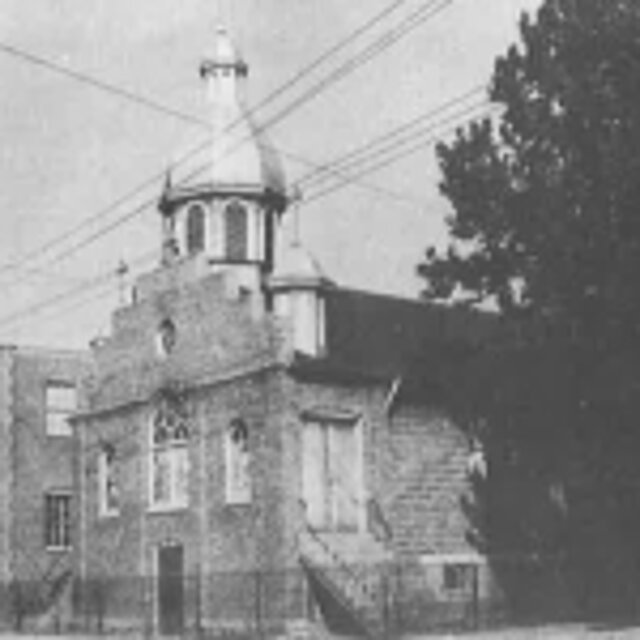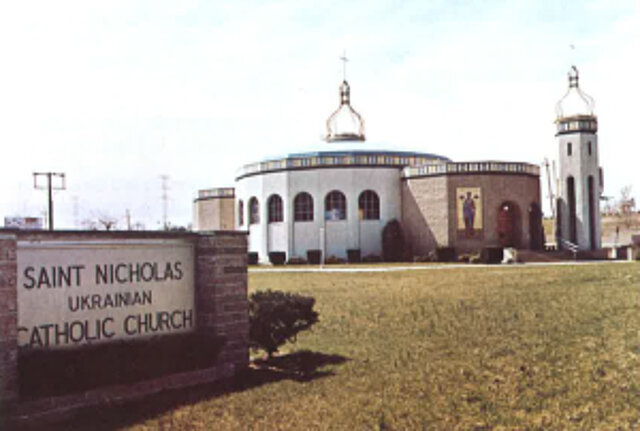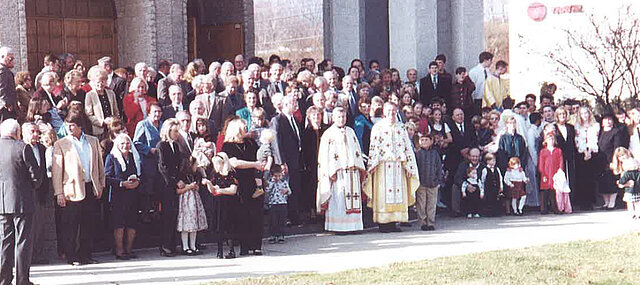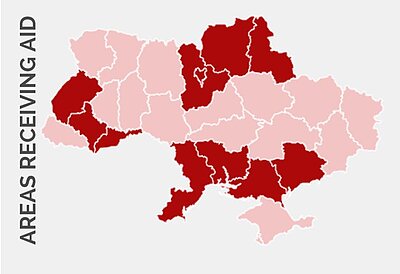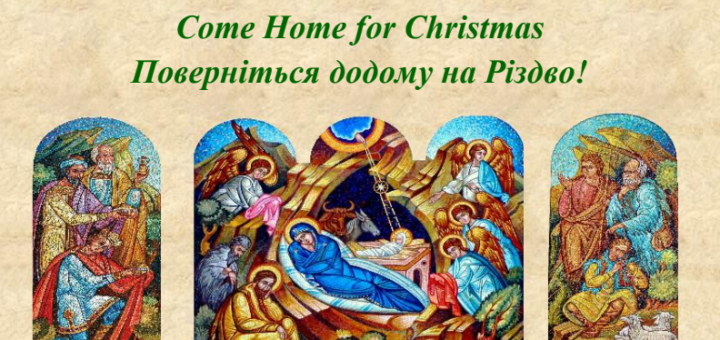- Christmas Appeal 2025
- Archeparchy
- Our faith
- Offices and ministries
- News
- Events
- Parishes
- Youth Protection
St. Nicholas Ukrainian Catholic Church, Wilmington
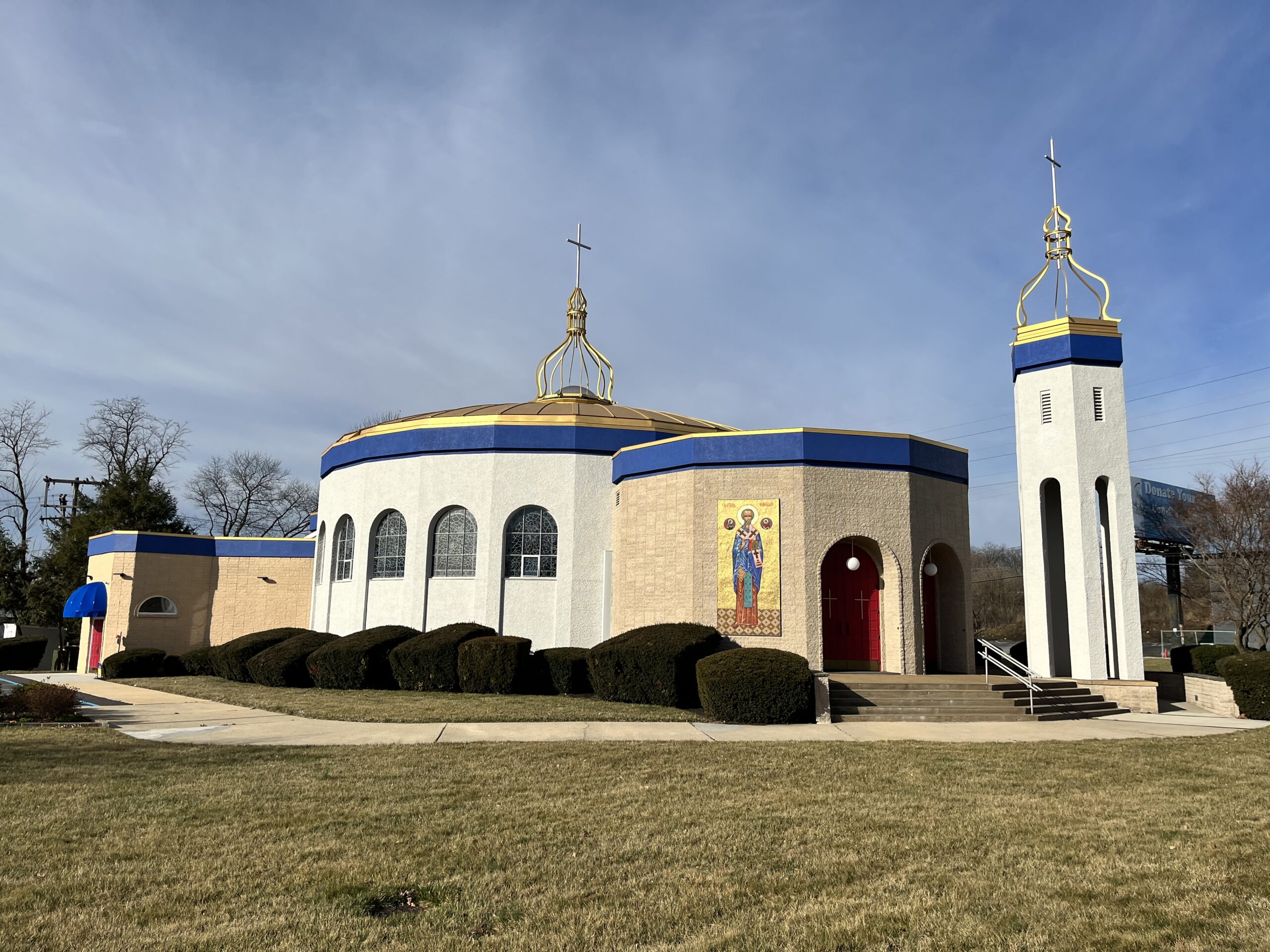
Rev. Volodymyr Klanichka
800–801 Lea Blvd, Wilmington, DE 19802-2503 130-276-25511 • wilmington@ukrcatholic.orgLiturgical Schedule
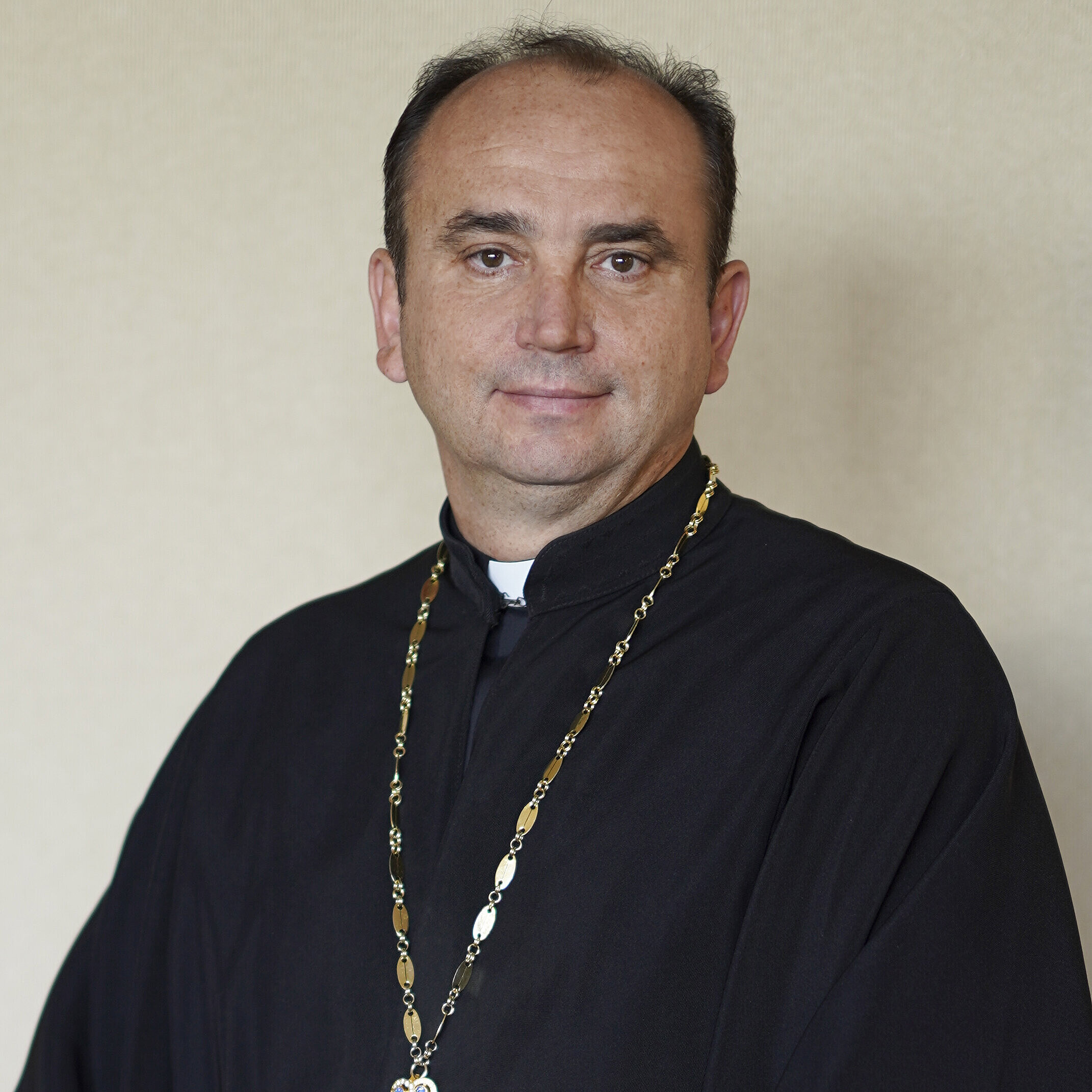
Rev. Volodymyr Klanichka
800–801 Lea Blvd, Wilmington, DE 19802-2503 302-762-5511 vklanichka@ukrcatholic.orgHistory of Parish
“Ukrainians once built citadels against the enemy. Now Ukrainians build citadels for Christ.” – The most Rev. Archbishop Metropolitan Ambrose Senyshyn, O.S.B.M., D.D., speaking at the St. Nihcolas Blessing of Grounds Ceremony, March 16th, 1968.
The formation of St. Nicholas Parish dates from 1903 when a sufficiently large and dedicate group of Ukrainian people in Wilmington decided they wanted to their own church in order to pray according to the ritual of their homeland and to maintain their religious and ethnic identity. The evolution of the Wilmington parish paralleled the establishment of the Ukrainian Catholic Church in the United States as a whole. Their history appeared to be marked by alternating periods of consolidation and conflict. This reflected the influences that played upon the Ukrainian immigrants at the turn of the 19th century. Ultimately, the reaction of the immigrants to these influences helped to define their religious and national affiliation.
Early History
Ukrainians began to settle in Wilmington in the 1890’s. They migrated from the farms or the Pennsylvania coal-mining regions to work in the factories, mills and iron and steel works located in east Wilmington, where most of the immigrants also lived, Initially, they satisfied their spiritual and social needs by traveling to a Ukrainian Catholic Church in Philadelphia and by inviting priests from Philadelphia to hold liturgical services in Wilmington in private homes or rented storefronts. Influenced, no doubt, by a campaign in Ukrainian-American newspapers at that time urging the erection of a church in every community where Ukrainians lived, the people in Wilmington converted a stable into a chapel. Records indicate that the chapel was already in use in 1903. A committee was formed to collect funds in order to build a proper church. In 1905 the committee received a charter incorporating St. Michael’s United Greek Catholic Ruthenian Church. In the following year, the committee purchased a lot on South Heald Street; and, in 1909, the church was erected largely with the labor of the parishioners themselves.
Reverend Wolodymyr Derzeruka with daughter Lidia[/caption]The parishioners refurbished and improved the church building, bought liturgical vessels and ecclesiastical vestments, and supported the Church with funds raised by the religious and social organizations in the parish. In 1912, the first church choir came into being. After a period in which priest-administrators had brief tenures at St. Nicholas, the Reverend Wolodymyr Derzeruka became pastor of Holy Ghost Church in Chest and administrator of St. Nicholas in 1914. He remained until April 1922. In 1914, a parochial school was founded. After Father Derzeruka was reassigned, Reverend Antin Lotovych was assigned as pastor in Chester and administrator in Wilmington from 1922 to 1926. The Church Hall was built in 1923 on the lot adjacent to the Church that had been purchased earlier. In September 1925, on the Feast of the Exaltation of the Holy Cross, the Church Hall was dedicated by Bishop Constantine Bohachevsky during his canonical visitation to the parish.
In 1932, a religious society for women, the Apostleship of Prayer was organized. In 1933 the men of the parish organized the Ukrainian Catholic Club of St. Nicholas. Father Chehansky, who was given his first pastoral assignment at St. Nicholas Parish and St. Basil Parish in Chesapeake City, Maryland, promoted his ties in Maryland, Chest and Wilmington to organize joint sports competitions, picnics, religious and parochial feasts and commemorated Ukrainian national holidays. Father Chehansky remained Administrator in Wilmington until 1936.
In 1940, the mortgage on the church building was paid off and St. Nicholas parish celebrated this important achievement at a banquet. In the late 1940s, Ukrainians who had been displaced from their homeland by the events of World World II began arriving in the United States. Many of those who settled in the Wilmington area were Ukrainian Catholics and they swelled the ranks of the St. Nicholas Parish. In 1948, Father Bohdan Osidach, a recently arrived married priest, became the first resident pastor of St. Nicholas. The parish immediately purchased a house for a rectory at 608 South Claymont Street.
By the 1950s, it became obvious that the existing church was too small to accommodate the influx of new parishioners. Morever, as the neighborhood where the church and rectory were located began to deteriorate, many parishioners who had lived there began to move to North Wilmington. In 1958, at a celebration marking the founding of the parish, plans were announced to erect a new church in North Wilmington.
Beautifying the House of God
In December 1957, Reverend Stephen Hotra became administrator of St. Nicholas and assumed acting pastorship in 1960, after the passing of Reverend A. Ulitsky. During Reverend A. Ulitsky’s pastorship, the Church observed its 50th Anniversary (1958) at which time the plans for the new church were first announced.
On October 3rd, 1964, Reverend Stephen Hotra announced a $150,000 new Church Fund Drive and the purchase of a $30,000 piece of property at Lea Boulevard and Miller Road, the site of today’s St. Nicholas. It barely six months, parishioners collected the first $25,000 of the Building Fund.
With the blessing of the Most Reverend Archbishop Ambrose Senyshyn and the help and cooperation of all the parishioners, the cornerstone was laid on December 7th, 1968. Reverend Andrew Baunchalk celebrated the first Divine Liturgy on May 4th, 1969.
On October 5th, 1969, the new church was blessed and dedicated by Metropolitan Ambrose Senyshyn after a solemn Divine Liturgy. Started by Father Baunchalk, this work was continued by Reverend Roman Dubitsky, who succeeded Reverend Baunchalk as pastor of St. Nicholas in June 1971. Mosaic icons, created from Venetian Smalti stones, were executed by J.M. Baransky Studio of Yonkers, New York, and installed behind the altar and at both sides at the front of the church in 1972. In 1973, a sign identifying the church was bought from Andco Industries Corporation of Greensboro, North Carolina and placed at the entrance to the church grounds. In 1974, the church parking lot was paved with asphalt by the local firm E. Earle Downing, Inc. In 1975 a blue carpet was laid down in the center aisle of the church and in the apse containing the altar.
In 1978 the beautification of the church was essentially completed when the iconostasis and the stained glass windows depicting the Stations of the Cross were installed in the church. A further achievement in 1978, the year of the Diamond Jubilee of St. Nicholas Parish, was the repayment of the $200,000 mortgage taken out for the construction of the new church. Both events were marked at a banquet held in the du Pont Hotel.
When Reverend William Gore became pastor of St. Nicholas Church in 1993, he soon came to the conclusion that the church buildings needed to be refurbished. To accommodate the increasing number of elderly and handicapped parishioners, a restroom was installed on the same level where Church services are held. To give the access to the Church Hall for parish functions, an elevator to the lower level was necessary. Under the energetic guidance of Father Gore, the parishioners quickly raised the funds necessary to build an addition to the church top house an elevator and restroom. The new addition was completed and blessed in April 1998. The interior of the Church was repainted, the Church Hall refurbished and the kitchen upgraded, The parking lot was re-paved. A room that serves as an office was constructed in the rectory.
Organized activities for youth waned in the 1990’s because there simply were fewer young people in the parish. Nevertheless, Father William Gore and Father Roman Mirchuk had a special interest in youth ministry. They held discussion groups for young people and in other ways engaged them in parish activities including plays and programs before the Christmas Eve Liturgy and at parish dinners. The introduction of a church choir during Father Gore’s tenure, after the retirement of long-time cantor Michael Kowalchuk, created another opportunity for young people to take part in parish life.
The proclamation of independence by Ukraine on August 24th, 1991, and the subsequent dissolution of the Soviet Union, represented the fulfillment of a dream of generations of Ukrainians. It also made much closer interaction possible with relatives, organization and friends in Ukraine. In 2003, The St. Nicholas Parish celebrated its centennial.

